How to Tame an Aggressive Rooster?
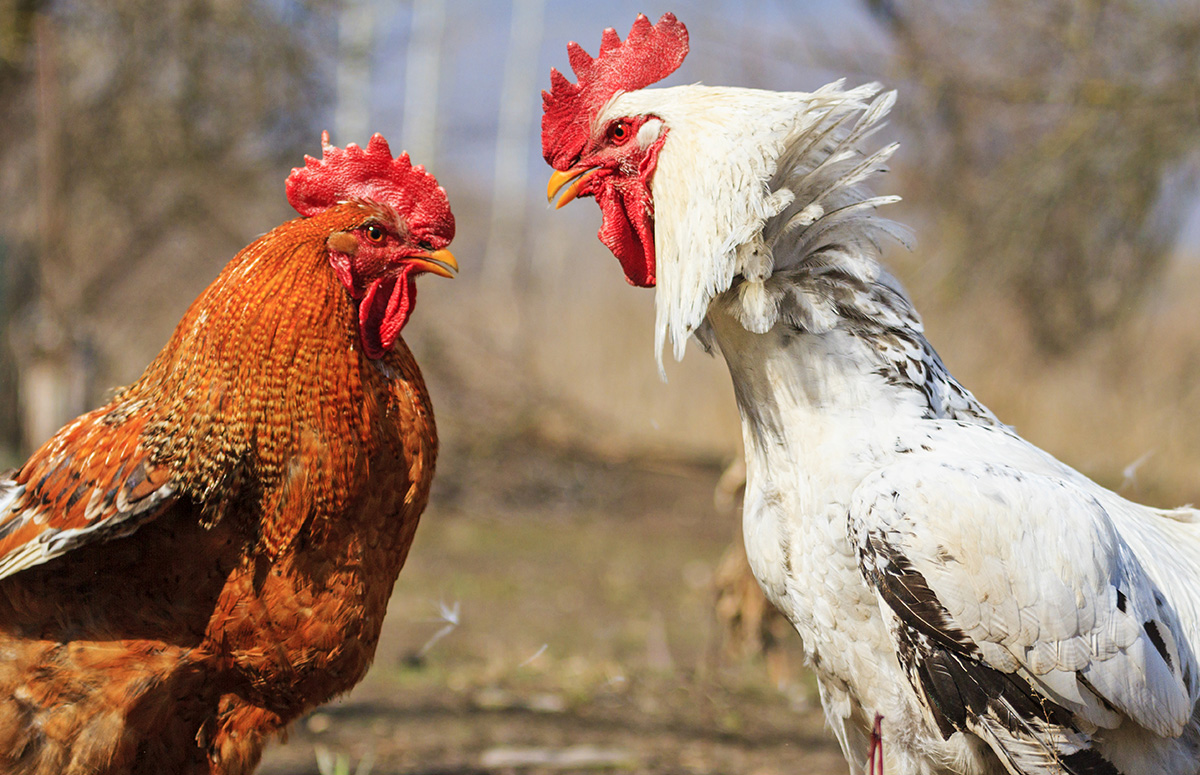
Let’s start by addressing a common misconception. Most roosters are not aggressive at all. In rare cases, roosters turn against chicken keepers or are antagonistic toward the hens.
There are some tricks to tame aggressive roosters or calm them down; however, this takes time, and success isn’t guaranteed. When the behavior doesn’t improve after a while, consider finding your rooster a new home. Territorial roosters can be a great asset on large farms with a big flock to protect.
Why is my Rooster Aggressive?
We need to determine what causes aggressive behavior to tame an aggressive rooster.
Breed
Overall, some breeds are more likely to express aggressive behavior than others. For example, a Rhode Island Red rooster is known to be bold, loud, and assertive. And Silkie roosters are believed to be friendly, cuddly and cute.
However, that’s a general guideline, as it also depends on the chickens’ personalities.
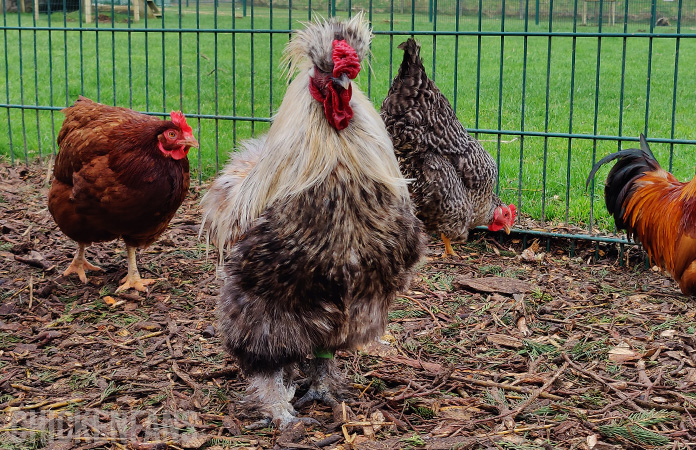
Protecting the Flock
The primary assignment of a rooster is to protect the flock, as their survival chances depend on him. Chickens are prey animals; they don’t hunt or think like predators. They literally sleep with one eye open as they constantly have to keep their guard up.
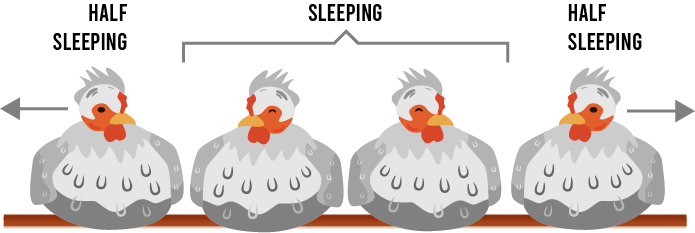
The rooster takes his task of coop protector very seriously. When threatened, a rooster will attack to keep the other chickens safe. When a rooster notices predators, he’ll protect and defend the chicken flock with his life.
Mating
Another essential task is to preserve his genes by mating with the hens. Roosters are rarely aggressive to hens. Sometimes, their overexcitement while mating is easily confused with anger and aggression.
If your rooster is overeager with mating, you’ll notice loose feathers on the hen’s back. When you see the hens are hurting or scared of the rooster, temporarily separate the rooster or provide chicken saddles for the hens.
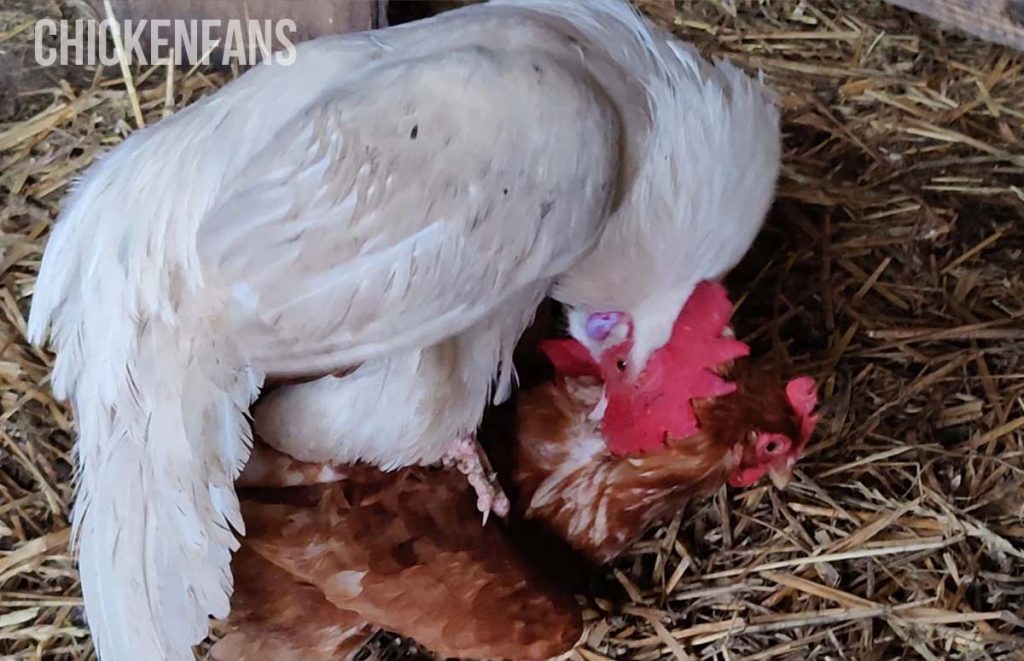
The saddle will protect their back while mating. We have a complete guide on how to sew your own chicken saddle.
A rooster with ten hens is much less likely to become overeager. If you own less than ten hens, keep the rooster apart during mating season to protect your hens.
Pecking order
Every chicken has its place in the flock, and some rank higher than others. A vigorous and protective rooster is the flock leader and sits at the top of the pecking order.
Having several roosters in the coop can trigger aggression or assault between roosters. A rooster sees other roosters as competition. He will attack them to mark its territory and protect the hens. That’s why most people prefer to keep only one rooster per flock.
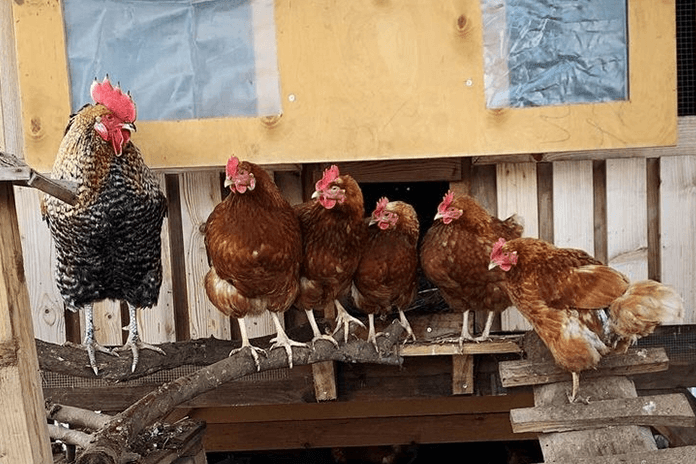
If you own multiple roosters, make sure to provide sufficient outside and inside space. The general rule is to provide a minimum of 3 to 5 square feet of inside space per chicken and a minimum of 10 square feet per chicken for the outside area.
If you want more than one rooster, double or triple the recommended space for your chickens inside the coop and run or consider free-ranging your chickens.
Personality
Wondering why some roosters are more aggressive than others is the same as wondering why one person gets angry more easily. Sometimes it all boils down to personality.
All roosters have their own individual temperament. And these don’t necessarily match the breeds’ typical characteristics. They can be aggressive, sweet as sugar, or somewhere in between. It doesn’t matter what breed they are.
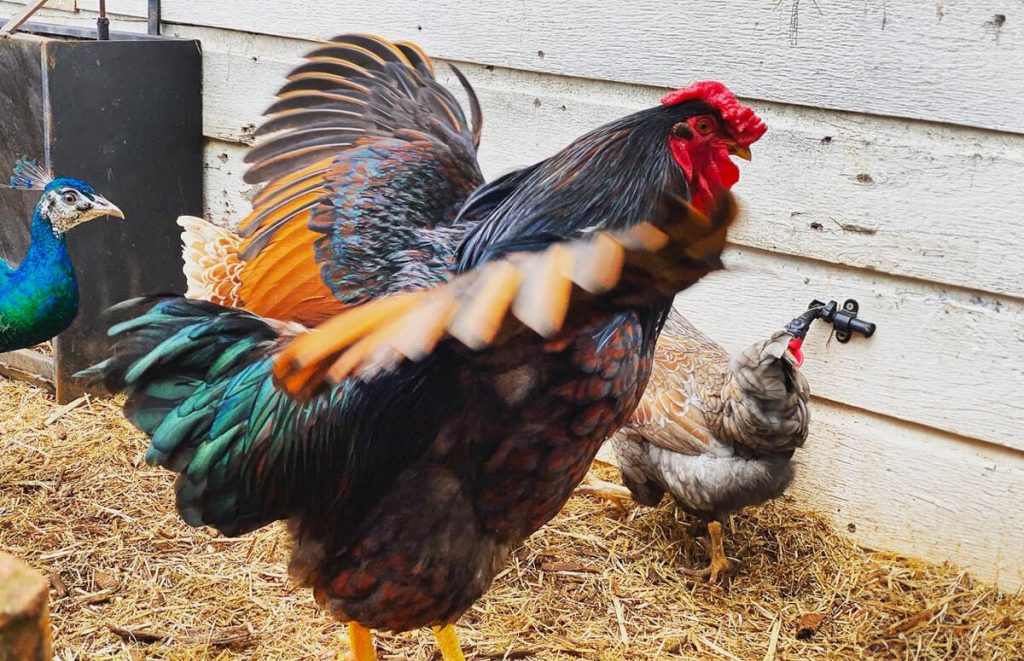
Always remember that roosters aren’t supposed to be cuddly, soft, and friendly pets.
If your rooster shows aggressive behavior towards the hens, try to stop the behavior by using pinless peepers or chicken blinders.
Pinless peepers are tiny plastic chicken glasses they wear on their nostrils. It looks a bit silly but these blinders make it impossible for the rooster to look in front of him. By blinding what’s happening right in front of the rooster, the chances of aggression towards other hens get slimmer.
How to Recognize Aggressive Rooster Behavior?
When a rooster feels threatened or needs to protect its flock, he warns you to back off in various ways. There are four different ways roosters attack.
- Flogging: The rooster tries to fly towards you and hit you with his wings.
- Spurring: The rooster will attack you by jumping at you with his claws and spurs.
- Chasing: The rooster chases you away until he believes you’re not a threat anymore.
- Pecking: The rooster pecks your legs or toes when you come inside the chicken run, or worse, starts to peck aggressively when you come closer.
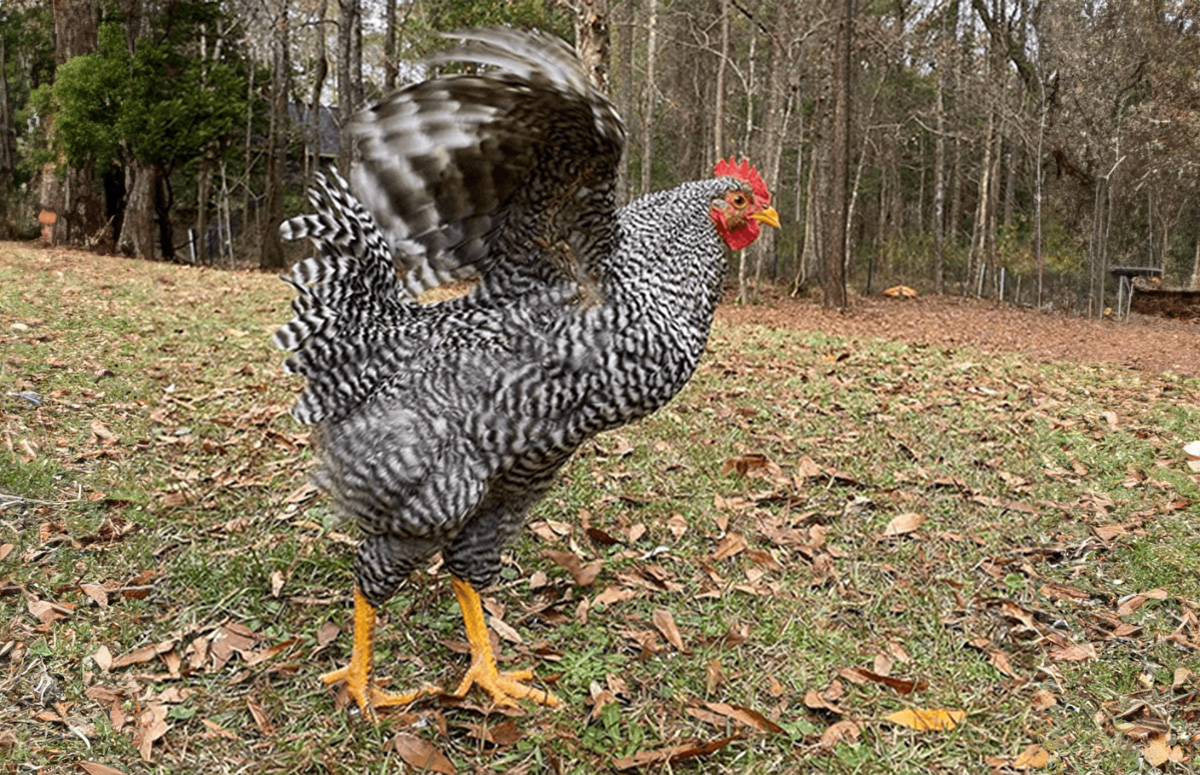
Signs that precede an attack
Aggressive roosters can be very sneaky, so it’s not always clear when they’re ready to attack you. Always enter the chicken run prepared.
Never leave the rooster out of your sight, and always keep an eye on him. If you don’t feel comfortable entering the chicken run, you can isolate the rooster with some chicken wire while you do your chores.
Dress accordingly. If you know your rooster tends to be aggressive, never enter the chicken run wearing just a pair of flip-flops and short shorts. Protect yourself and wear long trousers (like jeans), boots and long sleeves.
How to know predict an attack?
There are certain signs to look for to determine whether a rooster is preparing to attack you. Be extra careful when you notice one of the following behaviors:
- Run up to you, stop, and stare
- Moving around you, almost like he’s dancing
- Lowering his head without leaving you out of his sight
Once your rooster goes from ‘threat’ to ‘attack’ mode, leave the chicken run and get yourself to safety.
What NOT to do when dealing with an aggressive rooster?
Don’t turn to aggressive or violent behavior towards your chickens or rooster. Maybe it’ll scare them, but you won’t earn any respect from the flock. Scared chickens are not happy chickens.
Never hit, kick, chase, or abuse the rooster in any other way. That’s animal cruelty.
Domination isn’t the answer eighter. You want to create a partnership between the rooster and yourself, not a boss/animal relationship. You don’t want the rooster to see you as a threat, more as a companion or an equal, and make him trust you.
What to do when dealing with an aggressive rooster?
Always be careful
Be careful and keep your guard up but don’t exaggerate. A human is much bigger than a rooster, and although a rooster attack can hurt you, chances are he’s much more afraid of you than you of him.
Be careful when you have small children or pets running around in the backyard. Don’t allow them inside the chicken run when your rooster tends to be aggressive, they will probably be attacked.
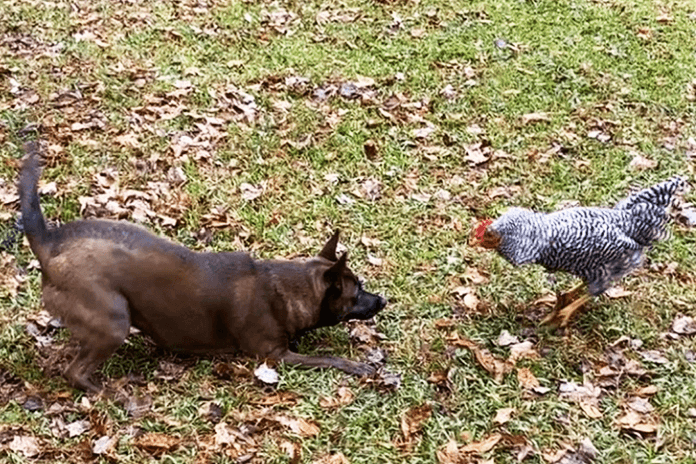
Don’t make any sudden movements inside the chicken run. Move around in a calm and peaceful matter. Don’t yell or make any other loud noises. Let your behavior speak for itself by telling the rooster you’re not there to harm him or the hens.
Keep your guard up
Keep an eye on the rooster while you do your chores inside the coop, but don’t pay too much attention to him. Respect the fact that the rooster has a job to do and, therefore, follows you around.
When a rooster attacks you every time you enter the chicken run, consider isolating him before you enter. It will make the coop chores much easier for you, and that way, you don’t need to train him to be less aggressive.
Separate your rooster
Separating your rooster is the golden mean between being attacked daily and spending hours and hours teaching your rooster to be less aggressive. Make sure he can keep an overview of the situation without bothering you.
Trim his spurs
If your rooster tends to use his spurs to attack you, you can trim them to make the spurs less dangerous. Don’t completely remove them or cut the spurs too close to his skin; it’ll make the area more vulnerable to infections.
To trim the spurs, use a partner to help you and operate during dusk or night when the rooster is asleep and can’t see in the dark. Let your partner hold the chicken while you trim a small part of the spurs. Be careful you don’t cut it off too close to the skin as it can start to bleed and hurt your chicken.
Only trim the part where there is no live tissue underneath. You can use toe clippers for dogs to use on your roosters’ spurs.
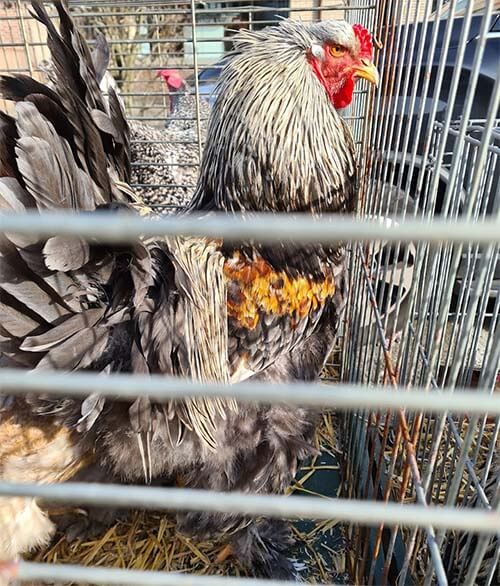
How to tame an aggressive rooster?
When separating the rooster isn’t desirable and you rather prefer to stop the behavior altogether, you can try to tame the aggressive rooster. But we must warn you. Training a rooster to be less aggressive is very time-consuming and challenging, and success is not guaranteed. Some experts even agree it’s impossible to change a rooster’s behavior.
But if you want to give it a try, why not? We give you all the information needed to get started; the rest is up to you and the willingness of your rooster.
Get prepared for training
‘Dress for the occasion’ is often said when people talk about going to a wedding, but it applies to training your aggressive rooster as well. Ensure the rooster can not hurt you while he attacks (he WILL attack). Wear a thin layer (like a legging) under jeans, a sweater under your coat. Cover your hands and wear tall rubber boots. Put your hair together in a ponytail and/or wear a cap.
Make sure you have easy access to some treats like mealworms to distract or reward the rooster.
Let him know you’re not the enemy
The most significant chance of success is to make a truce with your rooster. Let him know you’re not his boss, but neither is he. You’re not enemies but allies, with the same interests at heart. He needs to know you are not a threat to him and you won’t hurt him.
After putting on layers of clothing and armed with some dried mealworm, go inside the chicken run and let things go their way. Don’t make sudden movements; just let the rooster come closer and let him provoke you. You can try and talk to him in a calm and soothing voice to try and relax him. But he will most probably attack you when you don’t go away.
Let the rooster attack you. With all the layers of clothing, you probably won’t feel a thing. Let the rooster do whatever he wants or feels like doing. Don’t participate in the fight; undergo the attack. Don’t flee or go away.
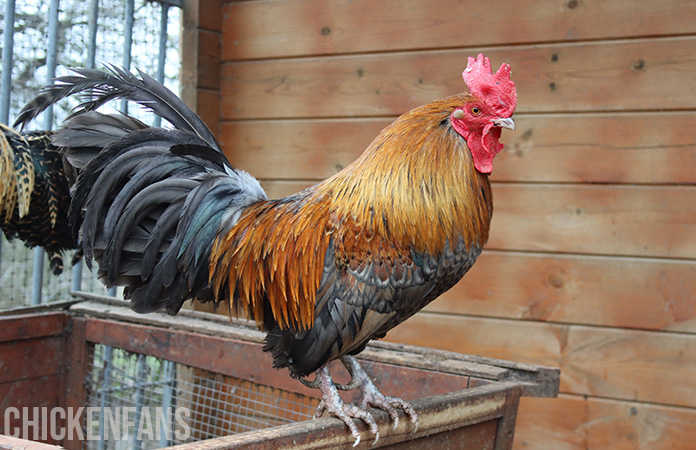
You show the rooster you’re not scared of him by standing your ground. Meanwhile, by not fighting back nor fleeing, you let the rooster know you’re not a threat to him.
You can leave the chicken run when the rooster tires himself and calms down.
Be prepared to repeat this step until the problematic behavior starts to improve. When things get out of hand, and you feel hurt or scared, use the dried mealworms to distract the rooster while leaving the chicken run.
Bonding with your rooster
After the previous step, your rooster is still aggressive towards you, especially when moving around in the chicken encounter. But the direct and uncontrollable aggression is gone. Now it’s time to start communicating and bond with the rooster.
Communicating does not mean you have to talk to him, but try and make eye contact at his level. When squatting in front of an aggressive rooster, always protect your eyes, especially the first times, as they are still very likely to provoke an attack. Wear safety glasses and a cap.
Chickens respond pretty strongly to eye contact; it calms them down and makes them feel comfortable. It’s also believed to be a crucial factor in creating a friendship with them.
This step is similar to the previous one, except you have to be at the roosters level and try and make eye contact with him. When he attacks you, let him. Don’t fight back; let him know you’re not a threat, nor you’re afraid of him. Remember, you are his ally, not his enemy.
Once you get the rooster to make eye contact, when squatting next to him and he’s not attacking you, you’re starting to bond.
After this stage, you can even try to feed him some treats out of your hand or scatter them on the dirt floor.
Now you’re both ready for the next step.
Try to move around while inside the run
You’ve managed to keep eye contact at the same level as your rooster, and that is excellent news. But chances are, your rooster will attack you once you start moving around inside his territory. Let’s work on that!
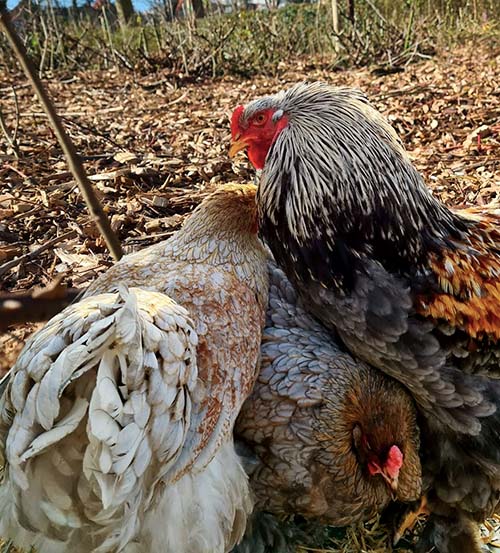
Rewards are essential when training a dog or cat or even a parrot. It’s the same with chickens. When they do well, award them with a treat. When they don’t, you don’t.
Maybe you’ve already fed some treats to the rooster while squatting next to him? That’s excellent. Repeat this a couple of training sessions in a row. Work on the trust and your relationship. The rooster should never feel threatened. Don’t give him any treats if he attacks you, but do as told in previous steps. Stay calm, don’t do anything.
Once he’s got the hang of it, you can move things on and try to move inside his territory while giving him a treat as long as he’s nice. When he’s attacking or aggressive, don’t give him anything.
It takes a couple of sessions before the rooster realizes good behavior is rewarded. Be patient; maybe you’ll walk around unbothered inside the chicken run in no time.
Don’t hesitate to take a step back.
We gave you some foundational guidelines to get started, but this doesn’t guarantee your training will always progress steadily. You might quickly advance from step 1 to step 3, only to get pushed back all the way to step 1. Don’t let this discourage you. Training animals is complex, and especially working with roosters is a challenge. When you see even the slightest improvement, carry on. Maybe it’s all worth it in the long run.
Caponize A Rooster
Caponizing or castrating roosters is a not-so-common practice to calm a rooster down. Dealing with loud, territorial, and aggressive roosters can be quite stressful for you and your family. When searching for a more ‘humane’ solution instead of killing the rooster you’ll find some information online about neutering him.
Let’s be very clear. This can be dangerous and painful, and success isn’t guaranteed. But as a counterweight to all online disinformation, we’ll help you with the most common misconceptions.
We address two different ways to caponize roosters:
- Physical castration
- Chemical castration
Psychical Castration
To physically castrate a rooster, the testes are surgically removed by making an incision between the ribs. In all birds, the reproductive organs are internal. This makes the procedure extremely complicated and risky. Less than 50% of roosters live through the procedure, the others die due to blood loss or other complications.
Because of the danger of this approach, it’s illegal in many countries around the world, for example, several EU countries, the UK, and Australia. In the US, caponizing roosters by removing the testes is still legal.
Next to the dangerous nature of this procedure, success isn’t guaranteed when it comes to aggressiveness. Having a rooster caponized at a young age reduces the chances of owning an aggressive bird in your flock. But that doesn’t mean you’ll get a pet chicken instead.
Think very carefully before neutering your rooster. This procedure can only be done by a licensed veterinarian and should be performed when the bird is under anesthesia. Remember, chances of survival are very slim (less than 50%), and success is not guaranteed.
Chemical Castration
A more humane solution is to chemically neuter the bird by implanting an estrogen implant. This procedure will temporarily stop the production of testosterone. After 9 months, the implant has lost its effect and has to be renewed.
Chemical castration does not hurt your chicken, but whether it’s efficient to make your rooster less aggressive depends on the chicken itself. Around 70-80% of chemically neutered roosters are less aggressive and have less urge to mate. This means he’ll leave your hens alone so they won’t get harassed all the time.
However, this procedure does not help to reduce loud crowing, so your neighbors won’t notice any effects of chemical castration.
Let’s sum things up
We’ve started this article by addressing an important topic.
Most roosters aren’t aggressive at all. But when they are, it’s almost impossible to change their behavior.
If you have the time and patience to try, please do. If you don’t, consider separating the rooster before entering the chicken run. But if both are not an option for you, try and find a new home for the rooster, as they can be a great asset to large farms with many flocks of chickens.




















